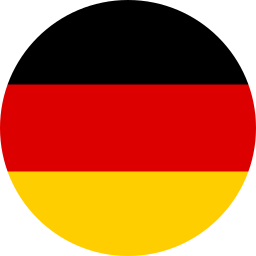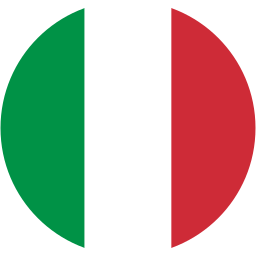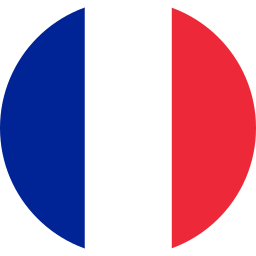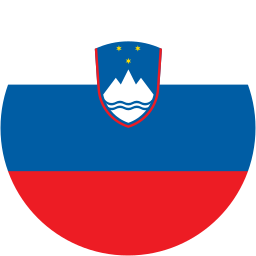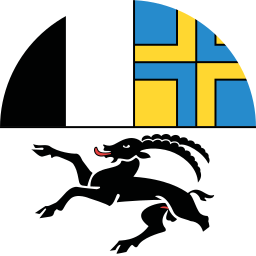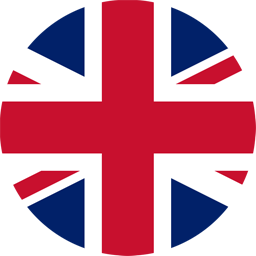Cartographic representation
On this page three different options are offered: (1) the cartographic representation of georeferenced information which can be selected by the different filters; (2) the quantitative cartographic representation of the relative frequency of filtered information; this function can be activated by the circle symbol with the letter \'Q\'; the filter \'Areas and Regions\' offers the corresponding reference areas; (3) the fixation of any selected information which can be combined to \'synoptic maps\' and stored according to the interests of the user. For this purpose, the dialog box \'Synoptic Maps\' is used.
(See Mapping)
On this page three different options are offered: (1) the cartographic representation of georeferenced information which can be selected by the different filters; (2) the quantitative cartographic representation of the relative frequency of filtered information; this function can be activated by the circle symbol with the letter \'Q\'; the filter \'Areas and Regions\' offers the corresponding reference areas; (3) the fixation of any selected information which can be combined to \'synoptic maps\' and stored according to the interests of the user. For this purpose, the dialog box \'Synoptic Maps\' is used.
(See Mapping)
(See Mapping)
Linguistic core data SQL Query
This menu leads to all linguistic attestations that are summarized under one base type; the base type is the common lexical root of all these attestations which can also belong to several language families. Thus, German Butter, French beurre and Italian burro represent the Greek-Latin base type butyru(m). The base type says nothing about the concrete ways of the historical distribution (etymology) of a morpholexical type.
(See Typification)
(See Typification)
This menu leads to all linguistic attestations which are summarized under one morpho-lexical type, i.e. the forms of a base type from only one language family which have basic grammatical characteristics in common, namely the word type, the gender and word formation elements. So the following dialectal Italian terms for simple alpine pasture buildings: feminine baita, Italian masculine bait and Italian masculine diminutive baitun represent different morpho-lexical types of one and the same base type.
(See Typification)
(See Typification)
- Concepts
- Bake
- Cuisine
- Farming
- Fauna
- Flora
- Domain Flowers
- Domain Other
- Domain Trees
- BARK
- CHESTNUT TREE
- COMMON HAZEL
- COMMON WALNUT
- CONE, OF A CONIFER
- FIG TREE
- FLOWER, OF THE FRUIT TREE
- HORSE-CHESTNUT
- LICHEN
- MEDLAR
- OLIVE TREE
- PART OF THE TREE, WOODY, VERTICALLY FIRM GROWING, ABOVE WHICH RISES THE CROWN OF BRANCHES BEARING LEAVES OR NEEDLES
- PEACH TREE
- PEAR TREE
- PINE
- PLUM TREE
- QUINCE
- ROWAN
- SAP
- SCOTS PINE
- SWISS PINE
- TREE
- TREE STUMP
- TREETOP
- WHITE MULBERRY
- Sträuche
- General
- Landscape formations
- Livestock farming
- Domain Activities
- TO CHANGE THE MOUNTAIN PASTURE
- TO CHASE BACK THE COWS
- TO DRIVE THE COWS TO THE RESTING PLACE
- TO FEED
- TO HAY
- TO LEAVE THE MOUNTAIN PASTURE
- TO LET OUT THE COWS
- TO LOAD MANURE
- TO MOVE TO THE MOUNTAIN PASTURE
- TO SCATTER DRY MATERIAL ON THE STABLE GROUND
- TO SET OUT MANURE
- TO SHEAR SHEEPS
- TO TIE THE ANIMALS
- TO UNTIE THE ANIMALS
- TRANSPORT OF MANURE
- Domain Buildings
- Domain Containers
- Domain Ingredients
- Domain Livestock
- Domain Other
- Domain Staff
- Domain Terrains
- Domain Tools
- Domain Activities
- Milk processing
- Time
- Weather
- Wood processing
This menu leads to all linguistic attestations which are assigned to a particular concept. The concepts indicate the meanings of the linguistic attestations; more precisely, they are the extra-linguistic categories that are designated by linguistic forms, for example, the different buildings, tools, products, persons, and so on that are relevant to the project.
(See Concept)
(See Concept)
Language related periphery
This menu leads to the network of \'informants\' of a specific source. All linguistic forms of the project are based on informants; depending on the source, they are individuals whose age, sex, level of education is specified, sometimes they are completely indefinite speakers. The informants provide exclusively georeferenced linguistic forms.
(See Informant)
(See Informant)
- Complementary data
- Real sources
- Early medieval places of discovery
- Forts, burgi, fortified settlements, open settlements, potteries, grave finds, depot
- Graves
- Infrastructure
- Places of discovery according to Weindauer 2014
- Places of discovery in the Salzburg Basin
- Places of discovery until the 1st half of the 6th century (Weindauer map 1)
- Row-gravefields, settlements, fortified hilltop settlements, churches, individual finds
- Settlement
- Written sources
- Infrastructure
- Latin inscriptions
- Toponymy
- "Walchen"-Namen
- Celtic toponyms in Friuli
- German toponyms in Slovenia
- Germanic toponyms in Carinthia
- Germanic toponyms in Italy
- Latin toponyms in Slovenia
- Place name Sallach
- Pre-Germanic/Romance place names according to Weindauer 2014
- Romance place names in Salzburg
- Slavonic toponyms
- Slavonic toponyms in Carinthia
- Slavonic toponyms in Friuli
- Substrate toponyms in Carinthia
- Tabula Peutingeriana places
- Real sources
Under this category all data are summarized which have no direct relation to the types, concepts, and informants of the project and therefore lie on the periphery. However, these data can be helpful or even important for the interpretation of linguistic phenomena.
(See Extralinguistic data)
(See Extralinguistic data)
\'Areas and regions\' are spatial divisions to which the georeferenced linguistic forms are assigned. Above all, they serve as reference values for quantifying evaluations. If users want to contribute comments to the elements of this category (e.g. specifics of individual political communities), VerbaAlpina asks for the relevant information to be sent. Unfortunately, it is currently not possible to enter a comment directly via the interactive map.
(See )
(See )
Legend
Close menu
Open menu
Save selection as synoptic map
| Name | |
| Description |
Save only active elements
Save all elements
Apply for release
Geographic navigation
Search for locations:
Search...
Search for linguistic core data:
Hexagonal overlays
Existing colums
complete documentation of this table in the database
|
|
complete documentation of this table in the database
Examples:
Instance --> Clustering Attestation
SUBSTRING(Instance, 1, 3) --> Clustering prefix
SUBSTRING_INDEX(Instance_Source, "#", 1) --> Clustering Source
Instance --> Clustering Attestation
SUBSTRING(Instance, 1, 3) --> Clustering prefix
SUBSTRING_INDEX(Instance_Source, "#", 1) --> Clustering Source
During quantitative queries, only the number of individual records can be retrieved, but no further information on them. The limit of 1000 records is omitted.
Print List
Print List
Add overlay...
Mayr's Alpenkarte 1875
Karl von Czoernig: Ethnographische Karte der oesterreichischen Monarchie, Czoernig 1855
Kirchenprovinzen Mitteleuropas um 1500, Droysen / Andree 1886
Sprecher von Berneck / Clüver 1617: Graubünden Sprecher von Berneck / Clüver 1617
Der Freistaat der Drei Bünde bis 1797 Zanoli 2006
ALD, ALD-I
Goebl, Hans (Wiesbaden): Atlant linguistich dl ladin dolomitich y di dialec vejins I, vol. 1-7 (sprechend: http://ald.sbg.ac.at/ald/ald-i/index.php), 1998, vol. 1-7, Reichert
Link
, ALD-IILink
Goebl, Hans: Atlant linguistich dl ladin dolomitich y di dialec vejins, 2a pert, 2012, vol. 1-5, Editions de Linguistique et de Philologie
Stamen Labels
Quote
Save Polygons
Category:
No category selected. Select a category first.
Save All
Add Multi-Polygon to Category
Add Single Polygon to Category
Add New Category
New Category:
Enter more than three letters to add a new category.
Add Category
Cancel
